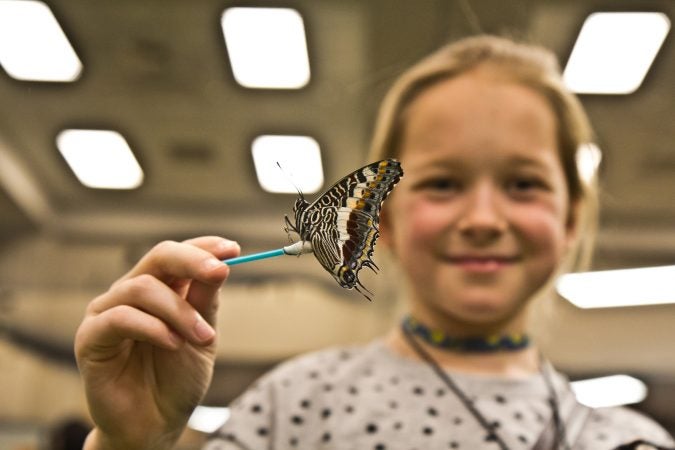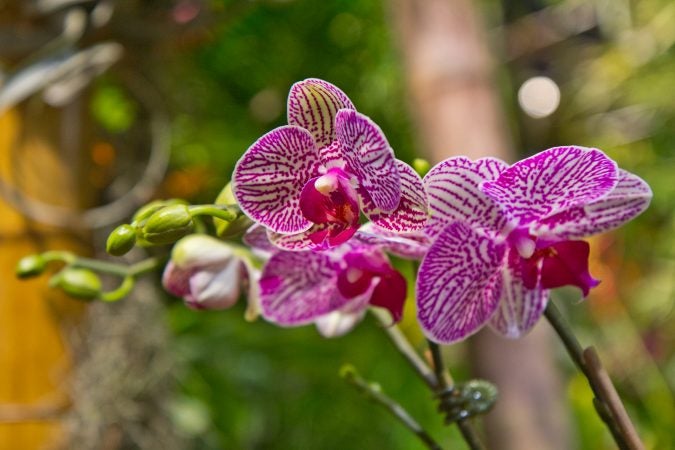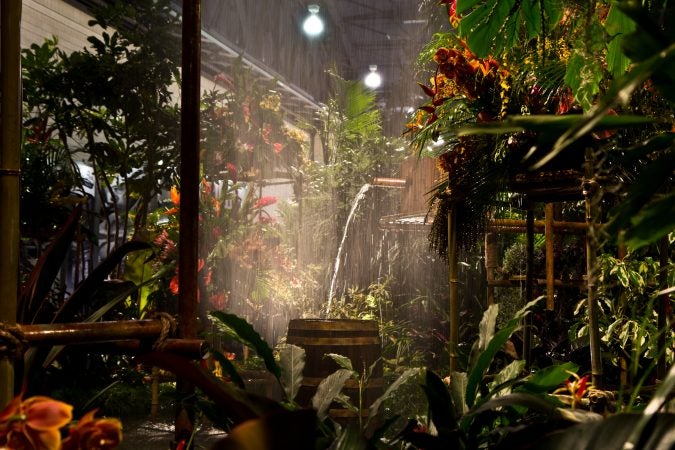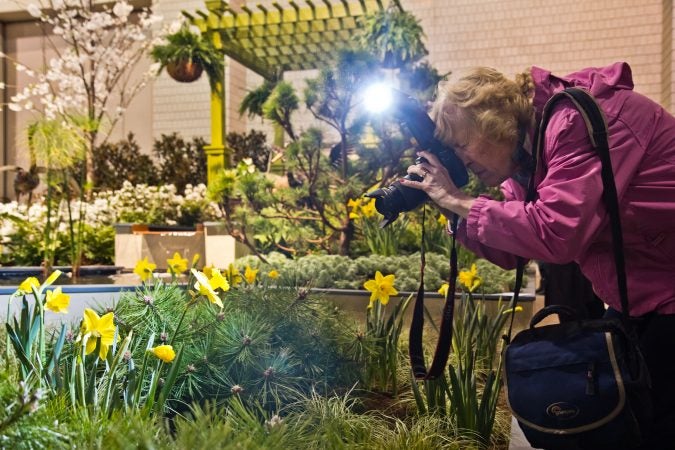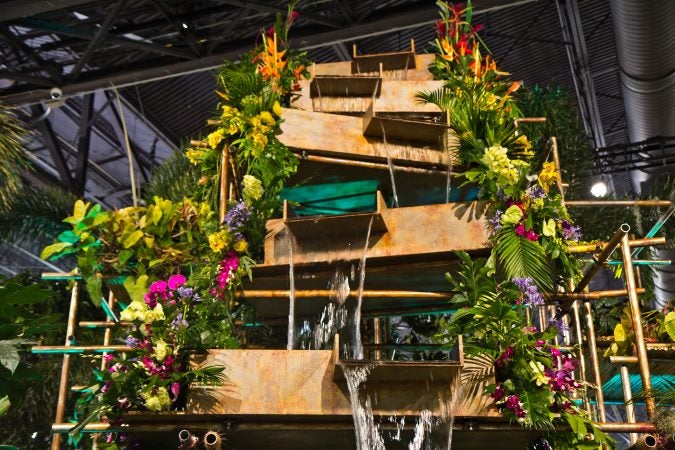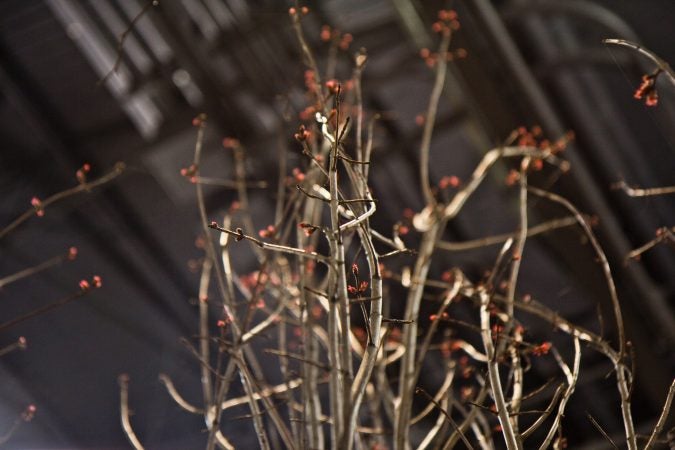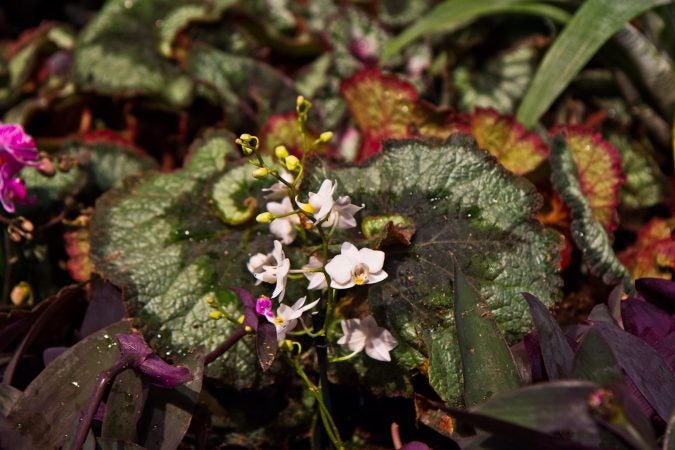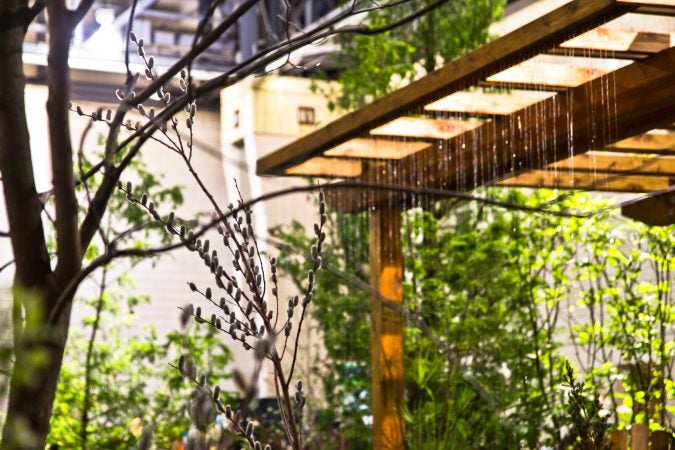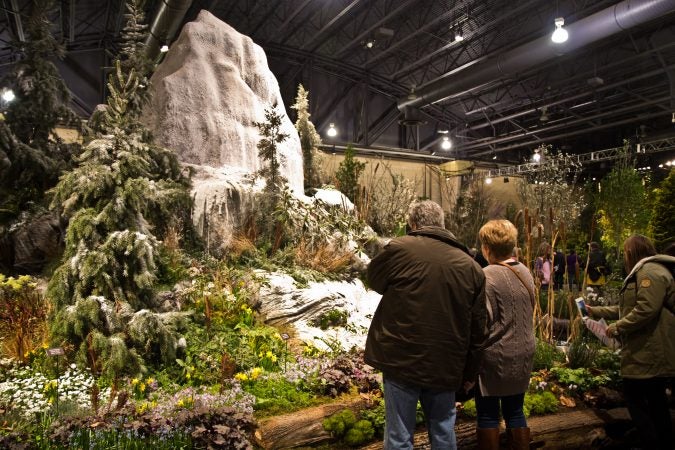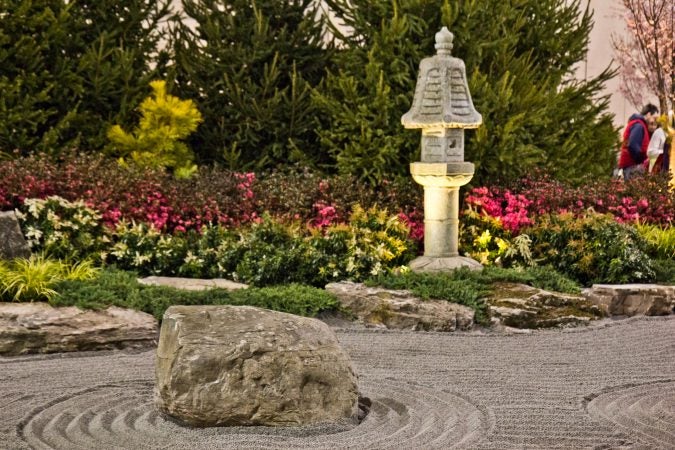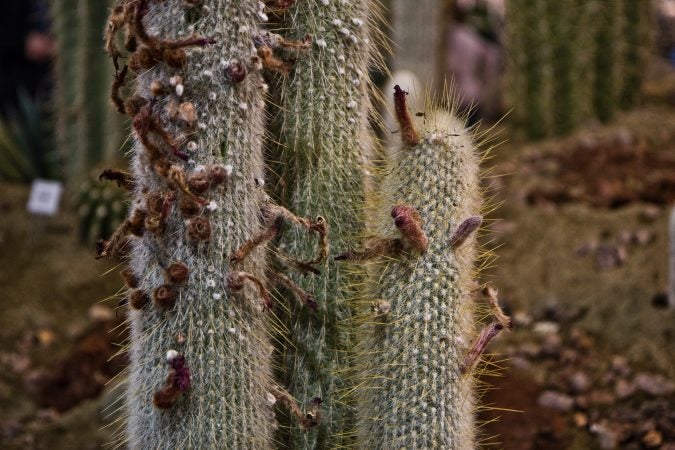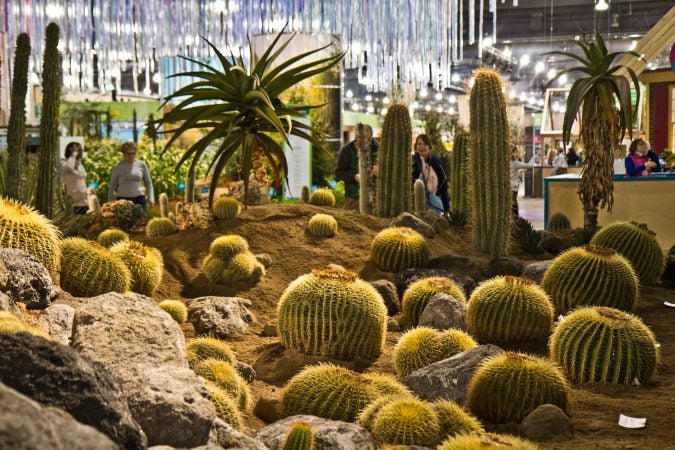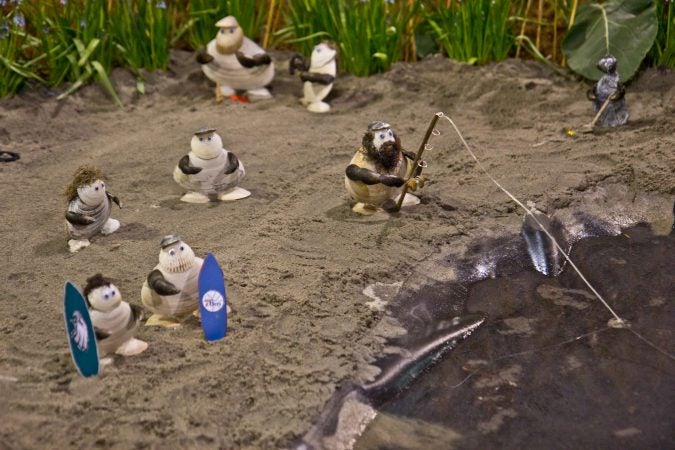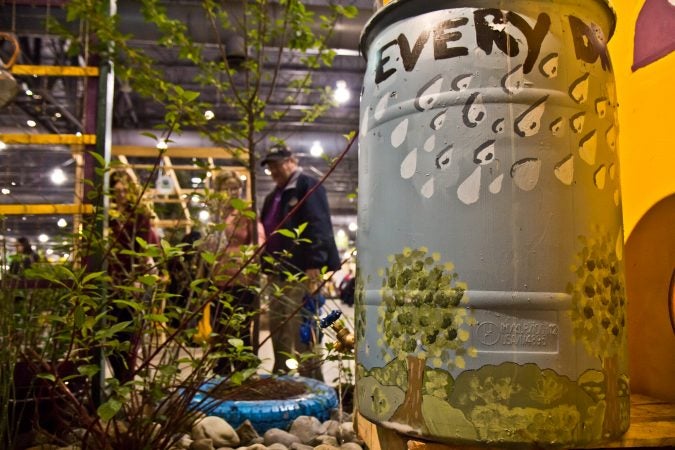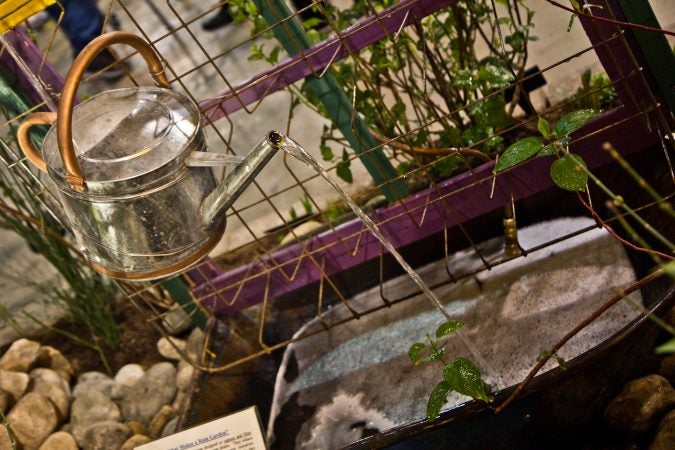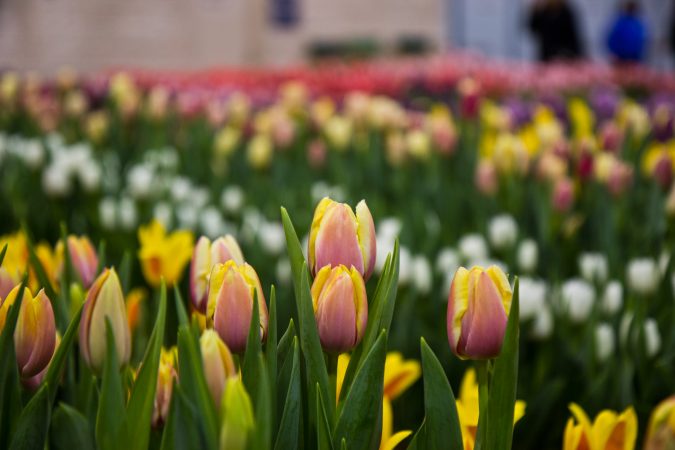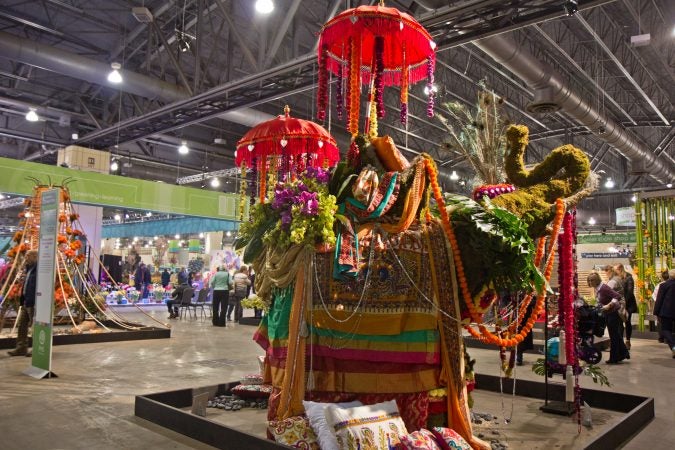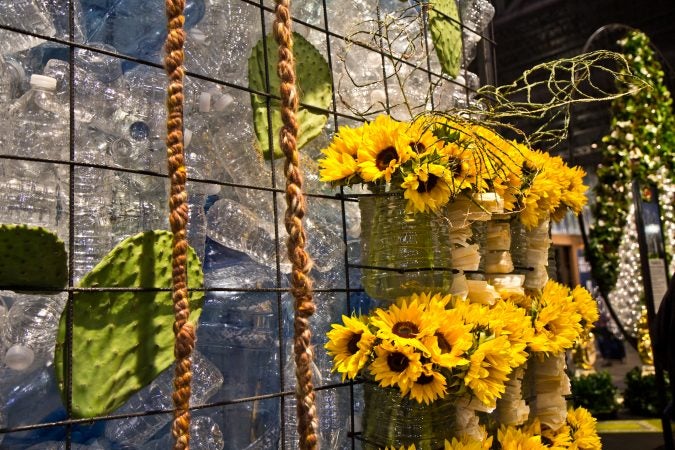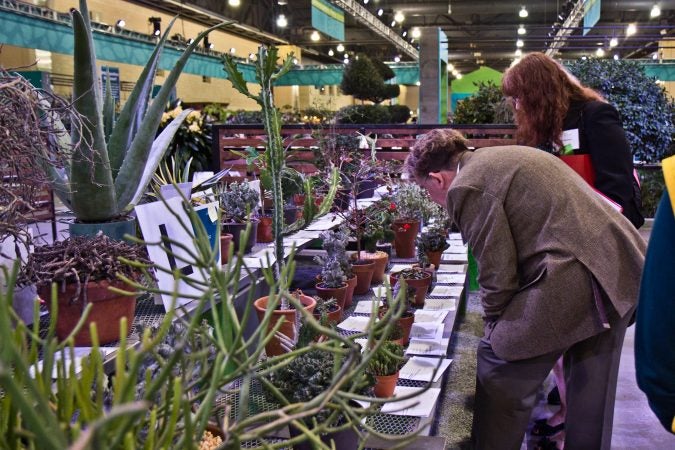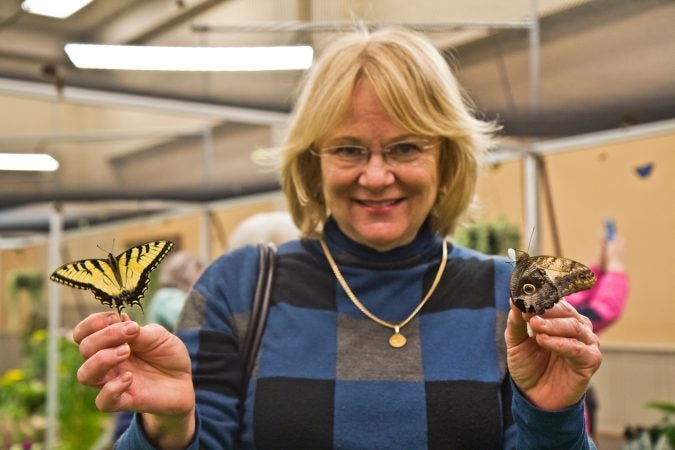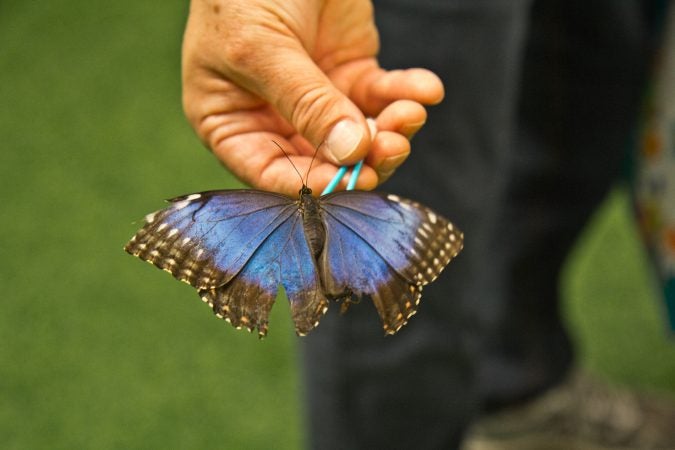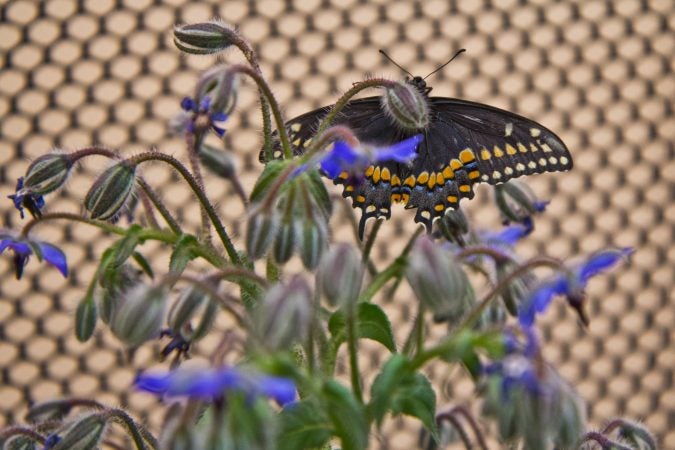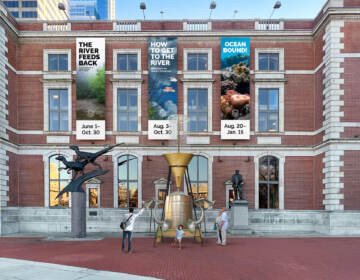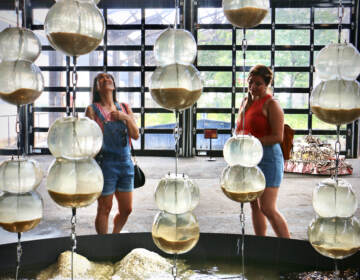Philly Flower Show taking deep dive into water
The annual Philadelphia Flower Show gets its feet wet in environmental issues surrounding water.
Listen 1:48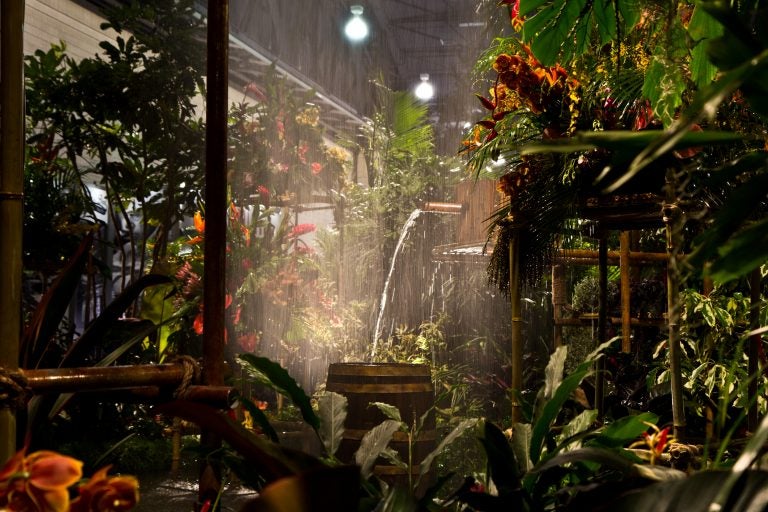
The 2018 Philadelphia Flower Show theme Wonders of Water inspired the main exhibit rainforest theme. (Kimberly Paynter/WHYY)
The annual Philadelphia Flower Show always has fanciful water elements as part of its garden displays. This year’s theme —”The Wonders of Water” — puts it in the spotlight, with 30-foot waterfalls, reflection pools, and a replica mountain stream of ice melt.
Upon entering the exhibition hall at the Pennsylvania Convention Center, visitors are immediately engulfed in a hanging rainforest of tropical flowers. The 10 acres of vendors, garden exhibitors, and showcase plants are splashing with several thousand gallons of water.
Some exhibitors stand out by conspicuously avoiding water. A desert display of waterless gardening features succulents and cacti. And a Japanese Sakuteiki garden includes meticulously raked sand around deliberately placed rocks, the patterns suggesting water flow.
One exhibit encourages people to think about local water. “Windows on the Watershed” represents four ecosystems of the Delaware River watershed, that network of rivers and tributaries flowing from the Pocono Mountains, through the farm fields of Bucks County, filtering into the concrete urban core of Philadelphia, and out to the Atlantic Ocean through the low marshes of New Jersey.
“One of the things we tried to illuminate is that nature is designed to help itself and protect itself,” said designer Victoria Prizzia. “We came up with this idea of ‘protector-scapes.’ What plants and trees work together in these land-use areas, which we can highlight as superheroes?”
A sugar maple tree is in a quadrant representing the Poconos. Its roots are able to draw water from deep underground and disperse it closer to the surface to benefit plants with more shallow root systems.
In the space representing the low marshes of New Jersey, where freshwater and saltwater mingle, are clusters of upright sedge. Its roots give structure to the constantly saturated soil and provide a place for other plants to anchor.
Representing the city, a swath of brown-eyed Susans provide nectar and seeds for urban fauna.
“Whether it’s trees using their roots systems absorbing water, holding water, slowing down the flow of water — even plants that filter water — we’re trying to show these green spaces, these riparian buffers, are very important to our health,” said Prizzia.
The exhibit is supported by the William Penn Foundation, a major funder of projects and research involving the watershed.
As part of “Windows on the Watershed,” the show will host a daylong summit for scientists and advocates talking about how to harness nature to better purify, protect, and manage water. The TEDx-style event on Wednesday will feature 17 speakers, including keynote speeches from Robert Irvin, CEO of American Rivers, and astronaut Mary Ellen Weber who will describe NASA’s outer space water research and it applications on Earth.
This disclosure, the William Penn Foundation supports reporting on watershed issues at WHYY.
WHYY is your source for fact-based, in-depth journalism and information. As a nonprofit organization, we rely on financial support from readers like you. Please give today.



